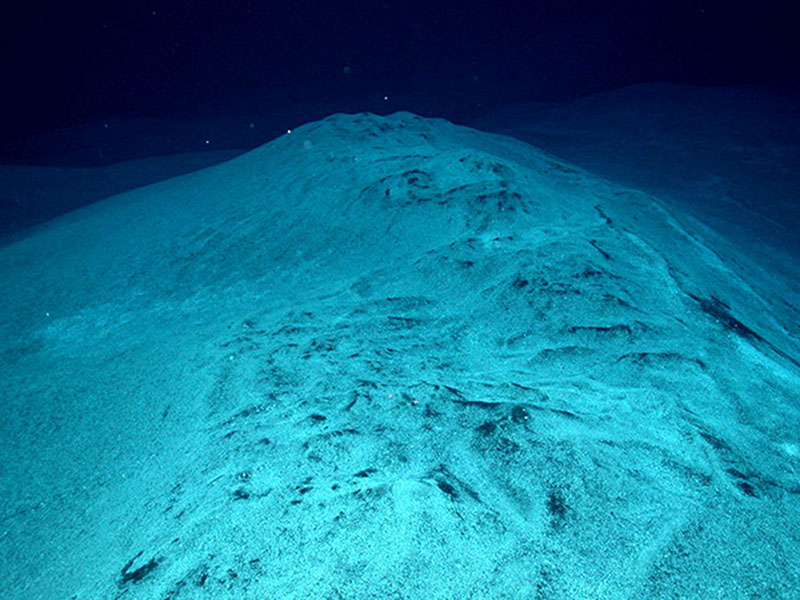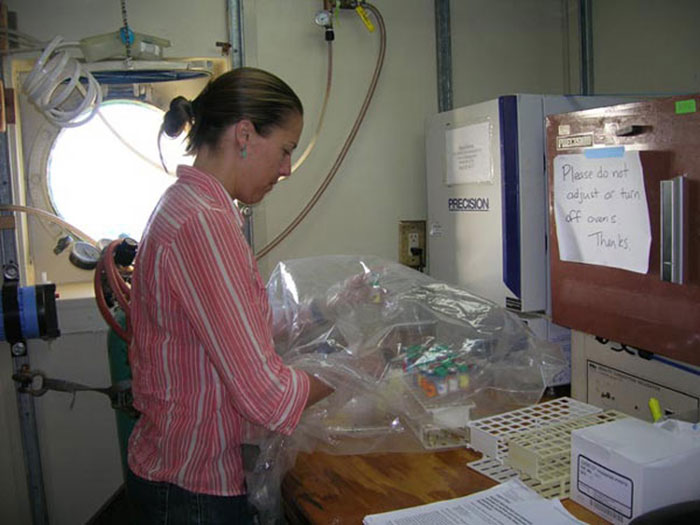
We asked students a few questions about ocean microbes. This is what they had to say. Download (mp4, 7.1 MB).
On June 21, 2015, the summer solstice, thousands of scientists will join together to participate in Ocean Sampling Day (OSD), an international collaboration to collect water samples from the ocean and rivers around the world. Within the water samples, scientists will also be collecting things so small that, in most cases, they are invisible to the naked eye. Some, in fact, are so tiny that up to a million of them can live in just one milliliter of seawater!
The nearly invisible items of scientific interest are living organisms that make up 98 percent of the biomass in Earth’s ocean and they are responsible for most of the biological activity that takes place within it. They are marine microbes - Bacteria, Archaea, Eukaryota, and viruses – and they are found everywhere, from the ocean surface to deep within rocks beneath the ocean floor.

Microbial mats coated in white sulfate material were observed and sampled at several vent sites at West Mata in 2009. These mats were dominated by Epsilonproteobacteria which is a class of bacteria often associated with sulfur oxidation in marine environments. Image courtesy of NOAA / NSF / WHOI. Download larger version (jpg, 2.5 MB).
Microbes are pervasive and can evolve rapidly in response to changes in the environment and could be used as indicators of ocean change. In fact, marine microbes are “the canary in the coal mine” for the marine environment. It is very important to acquire baseline information from all over the world against which future changes could be observed and measured. Detecting these environmental changes, however, depends on scientists knowing enough about marine microbes at one point in time to be able to recognize when changes have occurred at a later time. This is where Ocean Sampling Day comes in.

Sheryl Bolton cultures microbes in the lab aboard the research vessel (R/V) Melville. Image courtesy of Submarine Ring of Fire 2006 Exploration, NOAA Vents Program. Download image (jpg, 70 KB).
Initiated on the summer solstice in 2012, OSD organizes scientists from all over the world to collect the largest dataset on marine microbial diversity and function ever taken on a single day. OSD is now repeated on summer and winter solstice days with defined scientific procedures for how the samples are collected and what data is recorded at the time of collection, including date, time, location, air and water temperature, salinity, pH, and turbidity.
Additionally, how scientific water samples are stored and shipped to a specified laboratory for analysis and how they will be analyzed for certain characteristics/elements and archived is very clearly prescribed. In the U.S., NOAA is coordinating scientific sampling at approximately a dozen of its sites around the country during the summer OSD event.
Watch the Ocean Sampling Day 2014 - The Teaser video for more information.